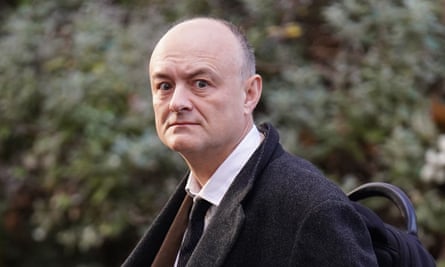For someone who was not even in Liverpool for the Labour conference, Sue Gray was the subject of a remarkable amount of conversation.
So what does the future hold for Keir Starmer’s chief of staff – and how much is she just a victim of circumstance?
The basic facts, as far as they are agreed, are well-aired: Gray is either a much-needed injection of civil service professionalism or a control-freak bottleneck to decisions. Either way, she has been the focus of much briefing to the media, often negative.
Being a target of internal and external sniping is not unusual for the consiglieri of new prime ministers – especially when so many people in government are jostling for attention.
Dominic Cummings was a lightning rod for whispering and leaks when he worked for Boris Johnson; Nick Timothy and Fiona Hill were a constant source of Whitehall gossip and media scrutiny when they worked for Theresa May.
Though different characters in almost every way – they all share the same basic problem.
Advisers being in the news is not sustainable in the long-term, hence the well-informed mutterings that Starmer must get a grip of a situationthat has contributed to Labour’s shaky start in government.
Otherwise, like some of her predecessors, Gray may have to go.
Her situation has nuances.
This is not like Andy Coulson, David Cameron’s communications chief, who quit No 10 in 2011 amid claims about phone hacking when he was at the News of the World, for which he was later jailed.
Cummingswas sacked in 2020 after months of chaos and open turmoil in Downing Street.
Gray’s position, for all the much-reported tensions with Morgan McSweeney, Starmer’s head of political strategy, appears as much as anything to be a function of the inevitable tensions of a new government operating in a system with very few formal structures.

“A prime minister can come in and essentially organise No 10 in the way they want to, which is an advantage because it means that the system reflects how the prime minister wants to work,” said Patrick Diamond, professor of public policy at Queen Mary University of London, who worked in Downing Street during the Tony Blair era.
“But it can also be a disadvantage because it does create a certain sense of flux, uncertainty around who’s doing what. This means a lot of it is all about relationships.”
Such uncertainties, he noted, are magnified when there is a change of both PM and governing party, something which in recent political history has tended to happen only every 15 years or so.
Much of the briefing against Gray has focused on her long career as a senior civil servant, the inference being that she is naive to the political currents vital to her new role.
However, Jonathan Powell and Ed Llewellyn were diplomats before they became chief of staff to Tony Blair and David Cameron respectively.
How well the combination at the top of government functions depends a lot on two key factors, according to Alex Thomas, who leads the work of the Institute for Government thinktank on the civil service: personalities and the willingness of everyone to show a bit of patience.
“It’s very common and normal that everybody takes a bit of time to suss each other out. This is the case in most governments across the world and over time,” said Thomas, whose previous experience in the civil service includes a period as principal private secretary to Jeremy Heywood, the then-cabinet secretary.
“But around the leader, it is a bit of a court – who has their ear – and it takes time for that to bed down. I saw that from the civil service perspective – you’re trying to work out who is the person in the room who can speak with the prime minister’s authority.”
This process of working out the chains of command and who needs to be listened to can be “more or less effective and rapid” depending on the government, Thomas said.
“Boris Johnson’s character and personality meant that it never really settled down. So it was an ever-shifting set of loyalties, which the system finds quite hard to deal with,” he said.
“Whereas with Cameron, the coalition took a while to settle in, but it was pretty clear fairly early on that Ed Llewelyn was an authoritative chief of staff.
“It’s pretty common for there to be turbulence in these times. But the question is whether the prime minister is able to impose authority and get that set of relationships clear.”

 By The Guardian (World News) | Created at 2024-09-27 16:35:12 | Updated at 2024-10-05 03:18:24
1 week ago
By The Guardian (World News) | Created at 2024-09-27 16:35:12 | Updated at 2024-10-05 03:18:24
1 week ago



